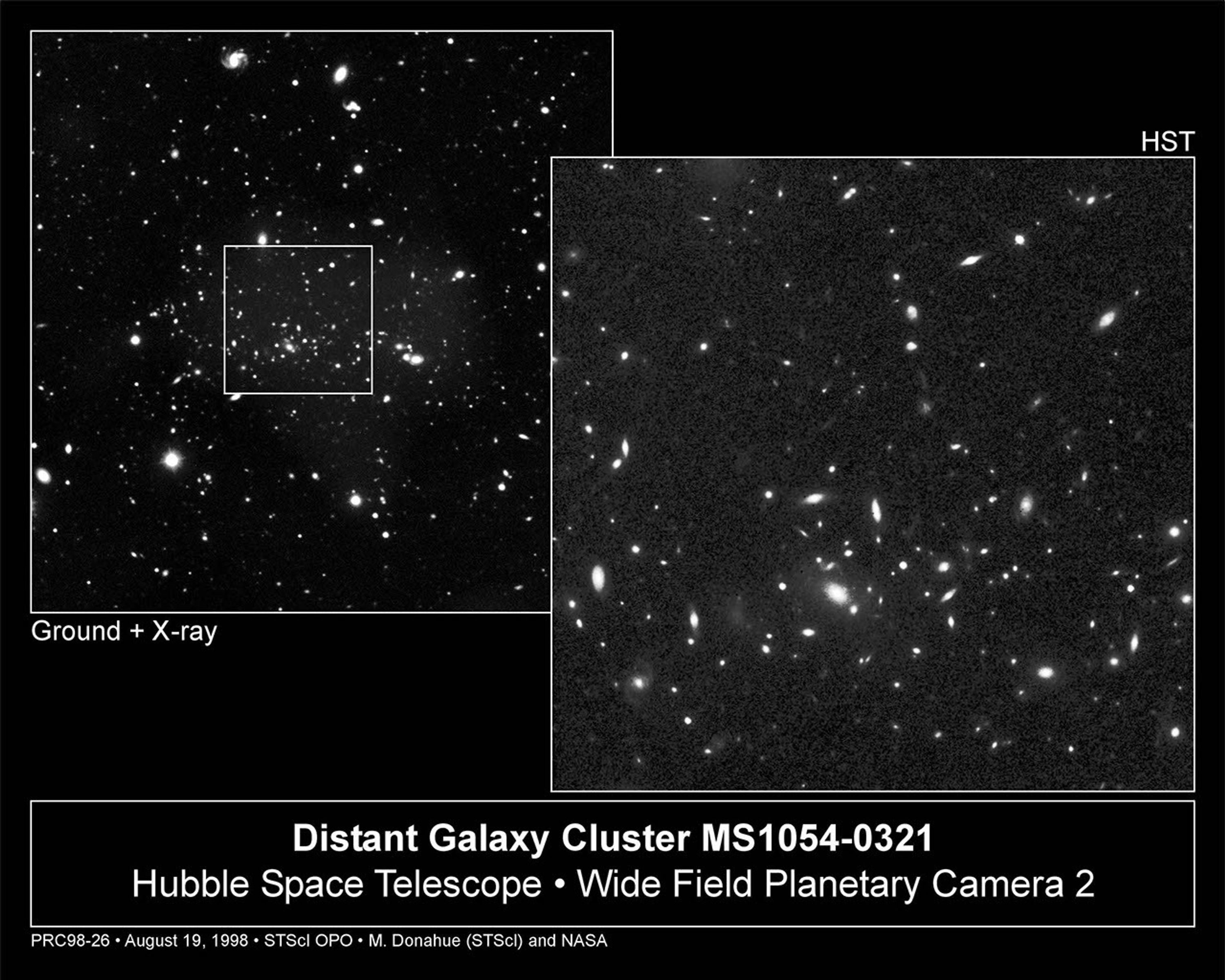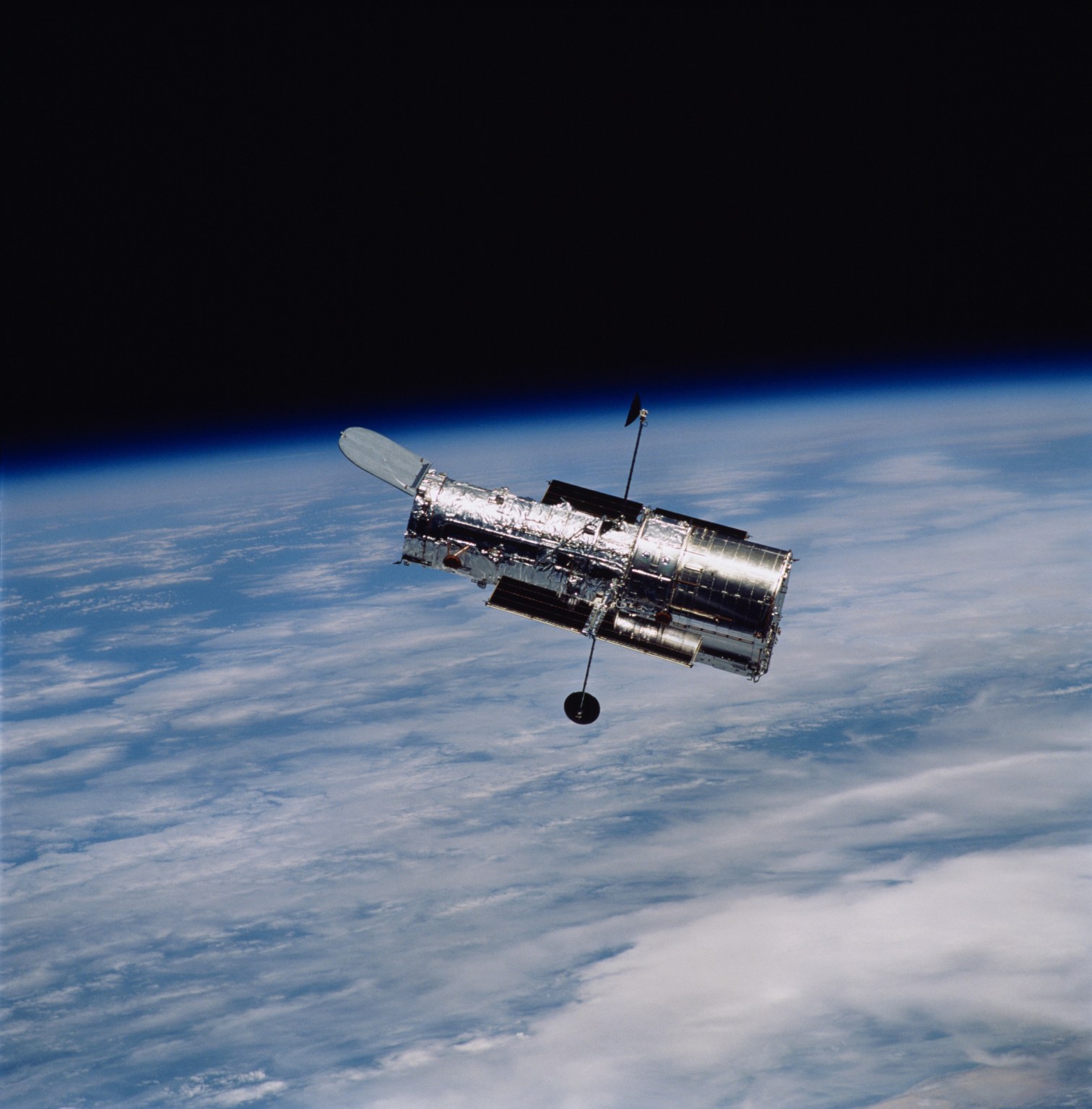1 min read
Views of Galaxy Cluster MS1054-0321 From Ground and X-Ray Observatories (left) and Hubble (right)

These images, taken by three different telescopes, show the distant, hefty galaxy cluster MS1054-0321, containing thousands of galaxies and trillions of stars. Weighing the equivalent of several thousand of our Milky Ways, the cluster is 8 billion light-years from Earth.
The image on the left is a color composite taken by ground-based and X-ray observatories showing the entire galaxy cluster surrounded by background and foreground galaxies. The blue color in the center of the image represents the huge amount of hot gas that fills the space between the galaxies in the cluster. This gas - colored blue - cannot be seen in visible light, but glows in X-ray frequencies. Astronomers have measured its temperature at 300 million degrees Fahrenheit. The X-ray information was used to estimate the cluster's total mass.
The boxed area in the center of the image pinpoints the Hubble telescope's field of view. The image on the right, taken by the Wide Field and Planetary Camera 2, shows a clearer view of the galaxies in the heart of the cluster. The width of this massive cluster is a few million light-years.
The ground-based image was taken between May 1992 and November 1993 by the 88-inch telescope at the University of Hawaii. Astronomers Isabella Gioia and Gerry Luppino of the University of Hawaii made this four-hour exposure with a near-infrared filter (8,000 angstroms).
The X-ray image was taken in 1996 by astronomer Megan Donahue of the Space Telescope Science Institute with the High Resolution Imager aboard the Rosat satellite. The exposure time was 34 hours.
Donahue used a near-infrared filter (F814W) to take the Hubble telescope image in 1996. The exposure time was four hours.
About the Object
- R.A. PositionR.A. PositionRight ascension – analogous to longitude – is one component of an object's position.10h 57m 0.19s
- Dec. PositionDec. PositionDeclination – analogous to latitude – is one component of an object's position.-3° 37' 27.0"
- Object NameObject NameA name or catalog number that astronomers use to identify an astronomical object.MS1054-0321
- Release DateAugust 19, 1998
- Science ReleaseDistant Heavyweight Galaxy Cluster Clobbers Dense-Universe Theory
- Credit
Related Images & Videos

Hubble Captures View of Supernova Blast in Remote Galaxy Cluster
In March 1996, the Hubble Space Telescope's Wide Field and Planetary Camera 2 just happened to be pointed at the faraway galaxy cluster MS1054-0321 when it captured the light from an exploding star, called supernova 1996cl. The cluster is 8 billion light-years from Earth. The...
Share
Details
Claire Andreoli
NASA’s Goddard Space Flight Center
Greenbelt, Maryland
claire.andreoli@nasa.gov


































